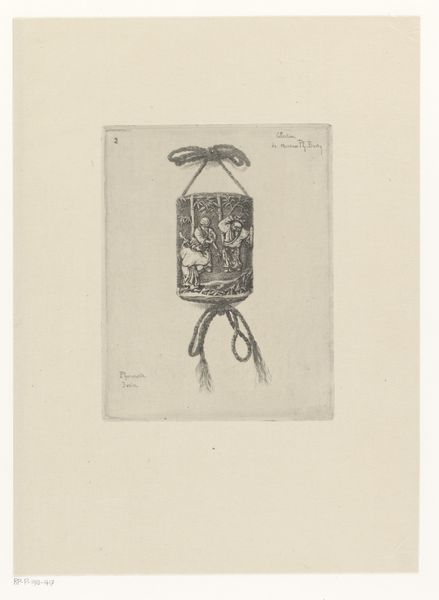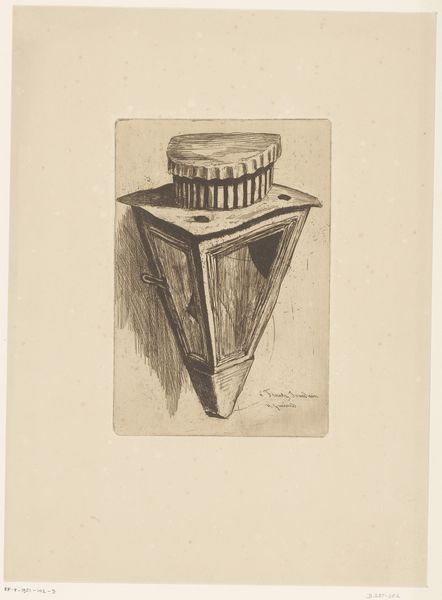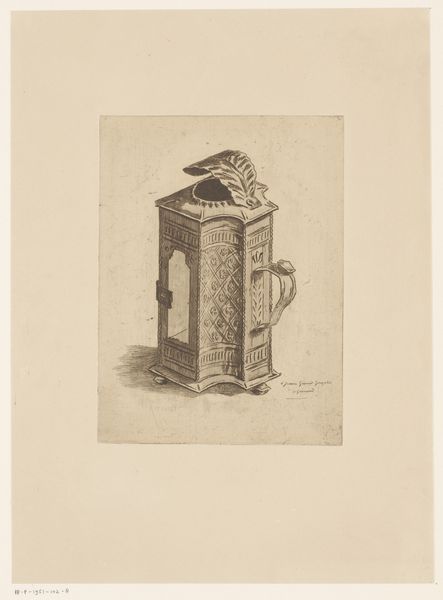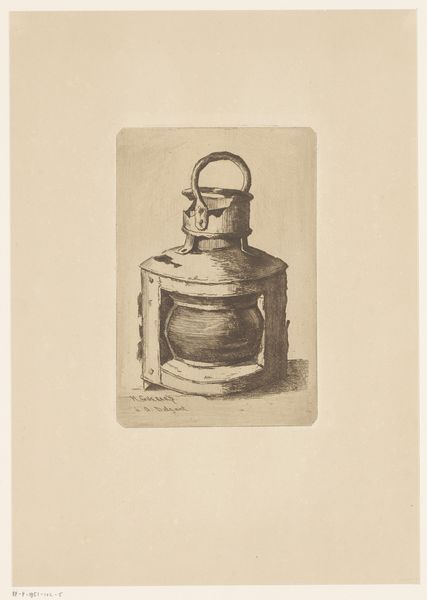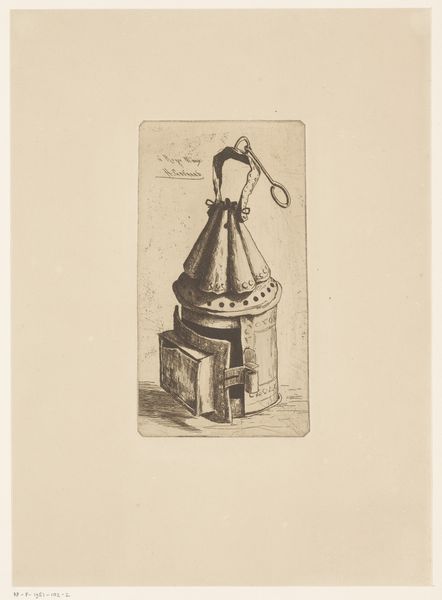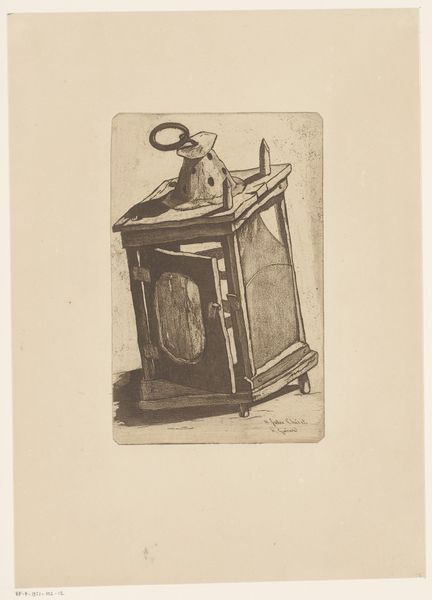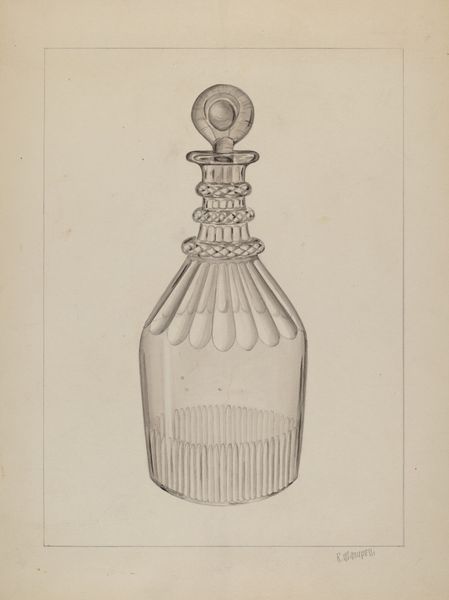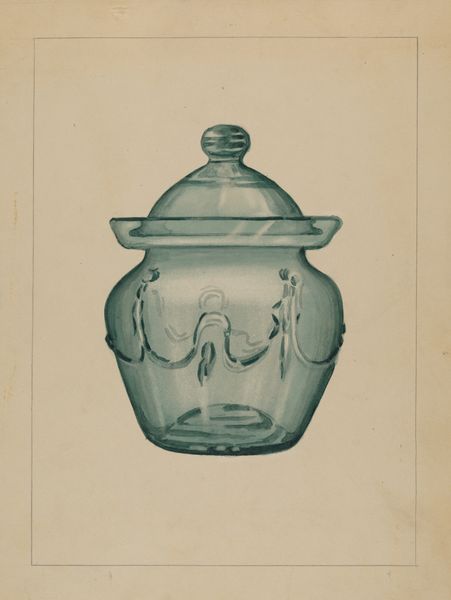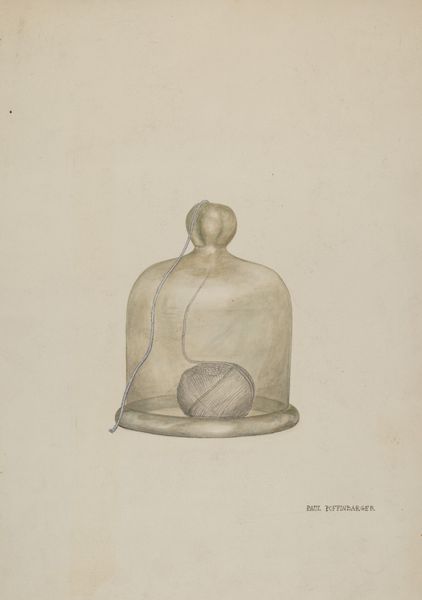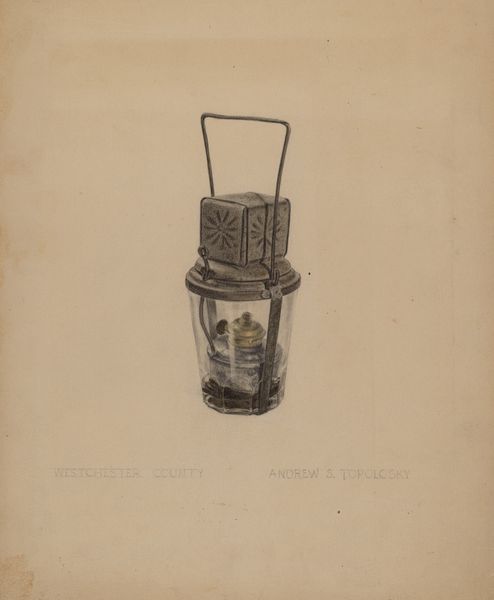
drawing, print, etching, engraving
#
drawing
# print
#
etching
#
engraving
#
realism
Dimensions: height 182 mm, width 116 mm
Copyright: Rijks Museum: Open Domain
Henri-Charles Guérard made this etching of a lantern sometime in the late 19th century. It's a simple subject, but the printmaking process gives it real depth. Guérard used a metal plate, likely copper or zinc, and covered it with a waxy, acid-resistant ground. Then, he scratched his design into the ground with a needle, exposing the metal. When the plate was submerged in acid, the exposed lines were etched, creating grooves. Ink was then applied to the plate, filling these grooves, and the surface was wiped clean. Finally, the plate was pressed onto paper, transferring the ink and creating the image you see. What is interesting about printmaking, of course, is that it is a form of industrial production in miniature, creating multiple originals. Here, the mundane reality of urban life is elevated to a work of art through technical virtuosity. By emphasizing the value of materials, making, and context, we can better understand the meaning of the artwork.
Comments
No comments
Be the first to comment and join the conversation on the ultimate creative platform.
